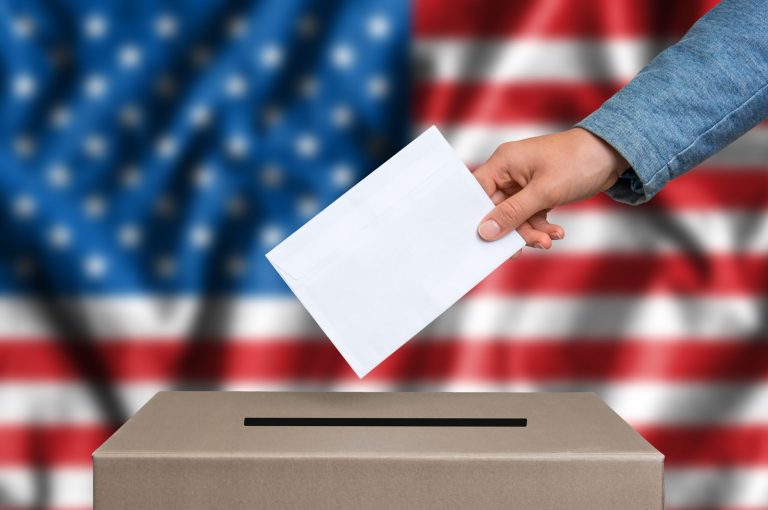As Election Day approaches in the United States, voters are preparing to decide whether Kamala Harris will become the first woman president or whether Donald Trump will return for a second term in office.
Initially, this election was set to be a rematch of the 2020 contest between Trump and President Joe Biden.
However, the race took a dramatic turn in July when Biden announced he would not be seeking re-election, throwing his support behind his Vice President, Kamala Harris.
With the election set for November 5th, the political landscape has shifted, leaving many wondering who will come out on top.
National polls: Harris leads, but the gap remains narrow
Since stepping into the race, Kamala Harris has maintained a slight lead over Donald Trump in the national polls.
Data shows her advantage has grown modestly following the vice-presidential debate between her running mate, Tim Walz, and Trump’s pick, JD Vance.
The debate, held on September 10 in Pennsylvania, drew over 67 million viewers and appears to have given Harris a small boost in the polls.
Before the debate, Harris was leading Trump by 2.5 percentage points, but in the week following the event, her lead increased to 3.3 points.
This marginal gain was largely due to a dip in Trump’s numbers rather than a significant surge in support for Harris.
Trump had been climbing in the polls leading up to the debate, but his numbers took a hit afterward, dropping by half a percentage point.
However, while national polling can give an overall picture of voter preferences, it doesn’t necessarily predict the outcome of the election.
This is because the U.S. uses an Electoral College system, where each state’s votes are based on population size.
A total of 538 Electoral College votes are up for grabs, and a candidate needs 270 to win.
Therefore, the real focus is on the battleground states, also known as swing states, where both candidates have a strong chance of winning.
Battleground states: The real contest lies here
While Harris may be leading in national polls, the race is much tighter in the key swing states.
These states, which include Pennsylvania, Michigan, Wisconsin, Florida, Arizona, Nevada, and Georgia, are critical to winning the presidency.
Polling in these areas shows that the candidates are separated by just one or two percentage points, making the outcome uncertain.
Pennsylvania, with its 20 Electoral College votes, is particularly crucial. Winning Pennsylvania would make it significantly easier for either candidate to reach the 270 votes needed for victory.
On the day Biden exited the race in July, he was trailing Trump by nearly five percentage points in these key states.
However, since Harris took over as the Democratic nominee, her polling numbers in swing states have improved, particularly in Pennsylvania, Michigan, and Wisconsin.
These three states were pivotal in Trump’s 2016 victory, flipping from Democratic to Republican.
Biden managed to win them back in 2020, and if Harris can do the same, her chances of securing the presidency look promising.
However, it’s important to note that polling in these states is less frequent than national polls, meaning there’s more uncertainty in the data.
Polling methodology: How reliable are these numbers?
The polling averages cited here are derived from the website 538, a well-regarded platform that aggregates data from multiple polling sources.
To ensure accuracy, 538 only includes polls from organizations that meet strict criteria, such as being transparent about their sample size, methodology, and timing.
This ensures that the averages presented are based on reliable data.
That said, polling is not an exact science. In both 2016 and 2020, polls underestimated Trump’s support, leading to unexpected results.
Pollsters have since adjusted their methods in an attempt to more accurately capture voter sentiment, but predicting voter turnout remains a significant challenge.
As a result, while polls can provide insight into how the race is progressing, they should not be seen as definitive predictors of the outcome.
Can the polls be trusted?
As of now, polling suggests that the race between Kamala Harris and Donald Trump is extremely close, especially in the battleground states. With such a narrow margin, it’s difficult to predict who will come out on top.
Polls have historically underestimated Trump’s support, and while adjustments have been made, the complexities of voter behaviour make forecasting the election challenging.
Both campaigns are now focusing their efforts on turning out voters in these critical swing states.
Harris’s ability to maintain her leads in places like Pennsylvania and Wisconsin could be the key to her victory.
Meanwhile, Trump’s campaign is working hard to rally his base and sway undecided voters, aiming for a repeat of his surprise 2016 victory.
As the final days of the campaign unfold, all eyes will be on the swing states.
Voter turnout and last-minute shifts in public opinion could ultimately decide who will take the White House in 2024.
The post Harris vs Trump election nears: Who’s leading the polls and can we trust these numbers? appeared first on Invezz

